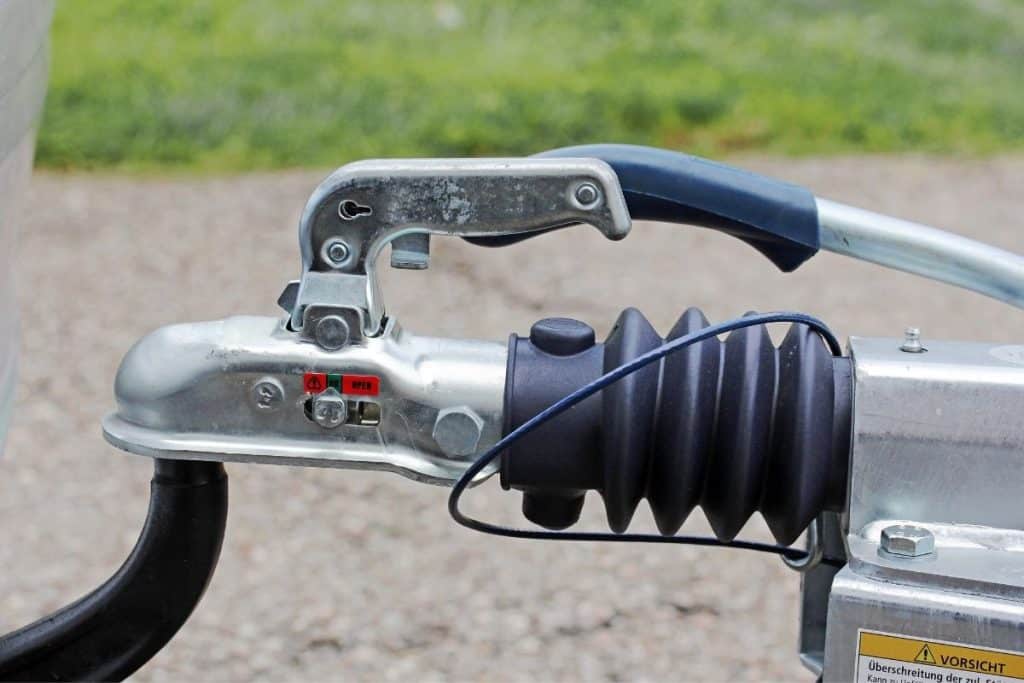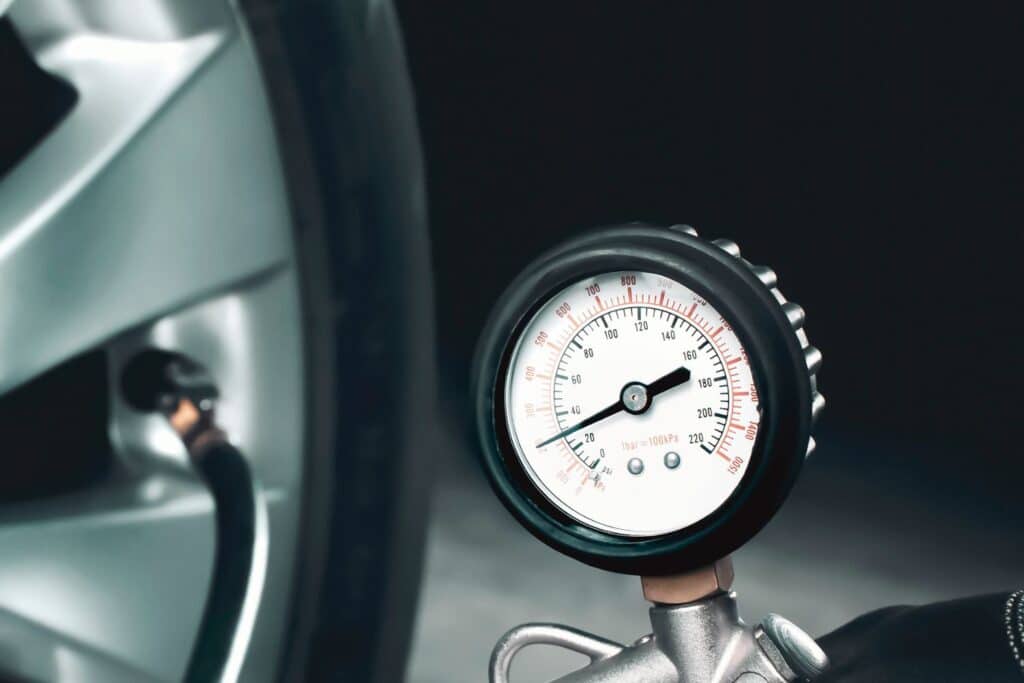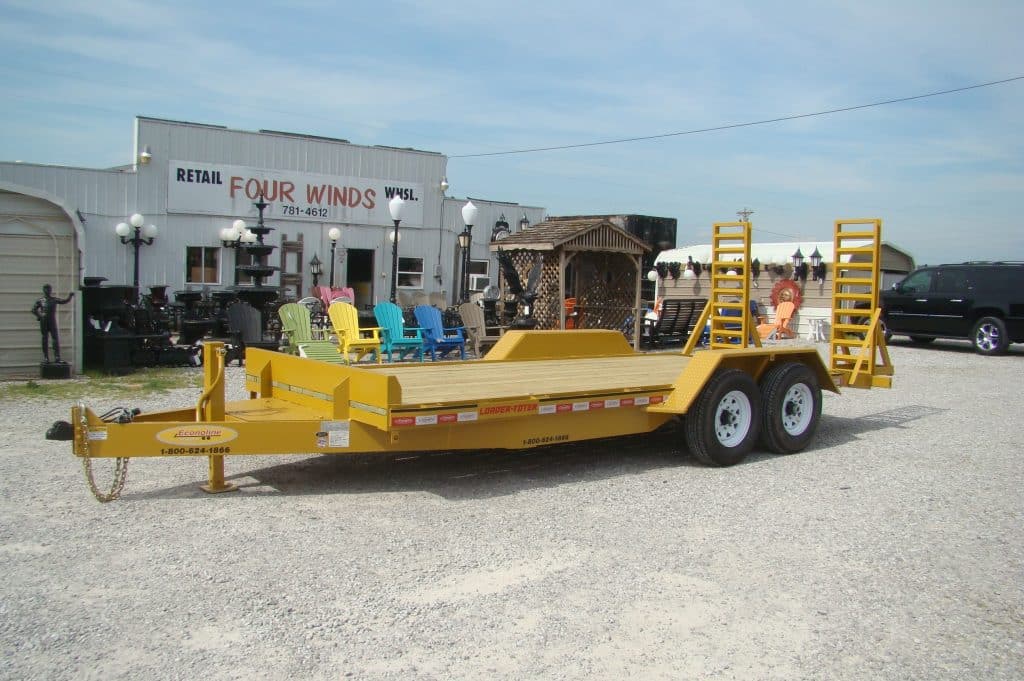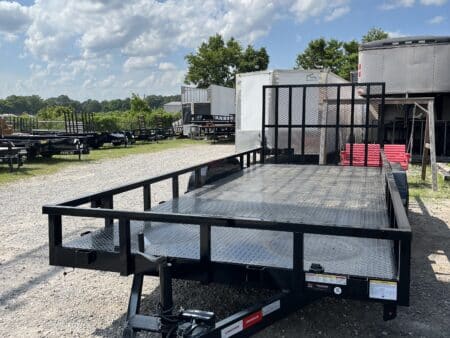
If you’re stuck wondering about how to tow a trailer, don’t worry, we’ve got you covered. Improper towing procedures can lead to a plethora of issues including property damage and injury. That’s why we’ve curated this guide, so you can avoid these issues and have a smooth towing experience. We have all the information you need, from how to hitch your trailer to how to drive with a trailer so you can hit the road with confidence!
How to Tow a Trailer | What is a Tow Rating?
Before you tow a trailer, check online or in your vehicle’s owner’s manual to determine its tow rating, also known as its towing capacity. Then, determine your gross trailer weight, which is the combined weight of your trailer and whatever is loaded on it. Be sure that this doesn’t exceed your vehicle’s tow rating, or you may end up damaging your vehicle, trailer, or even a person.
How to Tow a Trailer | Hitching

Now, you may be wondering about how to hitch a trailer. Hitching a trailer properly is a crucial step in ensuring the safety of you, your vehicle, your trailer, and the people around you. Your trailer can easily come loose and become a safety hazard if not properly hitched, rolling down the road possibly hitting other cars, and wrecking anything else in its path. Don’t stress, we have the information you need to avoid this situation.
Choosing the Appropriate Hitch
Not all hitches are built the same. Hitches are divided into classes to specify the amount of weight that they can handle. These classes are based on two numbers, the gross trailer weight, and the maximum tongue weight. A vehicle’s maximum tongue weight is specified by the manufacturer and is typically 10%-15% of the vehicle’s towing capacity. Here are the classes, followed by their maximum gross trailer weight and maximum tongue weight, respectively:
| Hitch Class | Gross Trailer Weight | Maximum Tongue Weight |
| Class 1 | 2,000 pounds | 200 pounds |
| Class 2 | 3,500 pounds | 350 pounds |
| Class 3 | 5,000 pounds | 500 pounds |
| Class 4 | 7,500 pounds | 750 pounds |
| Class 5 | 10,000 pounds | 1,000 pounds |
It’s good practice to install the hitch that matches your vehicle’s gross trailer weight and max tongue weight and to not downsize since you will be towing something lighter.
Choosing the Appropriate Hitch Ball
Now, you have a few options when it comes to choosing a hitch ball. A hitch ball is used to connect your hitch to your trailer and is what allows for smooth turning. Bigger hitch balls can handle more weight. There are 3 common sizes when it comes to hitch balls, these include 1 7/8-inch, 2-inch, and 2 5/16-inch.
How to Tow a Trailer | Hitch Height

It’s important to make sure that the loaded trailer sits level with the ground when it’s attached to your vehicle. You can adjust your hitch to make the trailer level, but first, you need to find the height of the trailer’s tongue when it is level. To do this, set up the trailer on a flat surface and lower the hitch jack until the trailer is level. You can tell if the trailer is level by using a carpenter’s level.
Then, measure from the ground to the top of the hitch receiver, next, measure from the ground to the bottom edge of the trailer’s coupler. Now, subtract the height of the receiver from the height of the coupler and the difference is the adjustment. If the number is negative, you must drop the height of the hitch, if it is positive, you must raise it.
If you need a new hitch for your trailer, Four Winds Trailer offers trailer hitches in KY for sale.
How to Tow a Trailer | Attaching the Trailer

Lining up
Be sure your trailer is in an open, easily accessible area. Begin reversing your vehicle towards your trailer. Line up in a straight line with the trailer and stop when you are about a foot away from the trailer. It may be a good idea to have someone help spot you as you are backing up, especially if it is your first time.
Positioning Your Trailer Coupler
Using your hitch jack, you want to raise your trailer coupler so that it is about 2-3 inches above the hitch ball. A trailer coupler is the metal socket that is on the end of the trailer that connects to the hitch ball. Now that your trailer coupler is in position, you want to reverse your vehicle until the hitch ball and trailer coupler are lined up directly above one another. This is when a backup camera or second person is highly recommended so that you don’t damage anything by reversing too far.
Securing Your Trailer
Securing the trailer properly is one of the most important steps in learning how to tow a trailer. First, unlock the trailer coupler latch so that the hitch ball can fit into the trailer coupler properly. This latch is used to lock the ball in place and keep your trailer secured to your vehicle, typically, you will need to remove the latch pin and lift the latch upwards to unlock it, however, this may vary depending on your trailer.
After your trailer coupler is unlocked, use your trailer jack stand to lower the coupler socket onto the vehicle’s hitch ball. Completely lower the coupler until all the trailer’s weight is supported by the ball. Next, move the hitchjack out of the way so that you don’t damage it while driving. Then, lock the coupler latch and secure the latch pin. Finally, attach the safety chains to the back of your vehicle in a cross pattern. These chains will act as a safety mechanism in case your trailer comes loose.
How to Tow a Trailer | Wiring

Locate your vehicle’s wiring socket. This should be a small panel in your trunk, on the back of your vehicle, or even a loose wire near the hitch ball. Be sure it is in good condition before plugging it in so that it works properly. In the case of a damaged wiring socket, you should consult your mechanic.
Next, grab the loose wire connected to your trailer, run it somewhere it won’t get damaged, and plug it into the wiring socket. Finally, test all the lights on the trailer from the blinkers to the brake lights. If any of your lights don’t work, do not drive the trailer, and get them fixed before you take the trailer on the road. Also, be sure to check the brake battery.
How to Tow a Trailer | Tongue Weight
You want to make sure that the tongue weight is 10%-15% of the gross trailer weight to ensure your safety when driving. Tongue weight is the downward force on a vehicle-trailer coupling point. There are multiple ways to check the tongue weight of a trailer. These include using a tongue weight scale, a regular bathroom scale, or a vehicle scale. A tongue weight scale is a small scale designed specifically to measure a vehicle’s tongue weight; these can be found at most towing supply shops.
If you want to measure with a bathroom scale, be sure that the tongue weight won’t outweigh your scale, in which case, you can simply place the hitch jack directly onto the scale. However, if it outweighs your scale, you can use some dowels or pipes along with a couple of beams to make a platform that will spread out the tongue weight and allow you to place your scale below it (As shown above). Learn more about tongue weight here!
If your tongue weight is too high, you may want to consider using an equalizer bar. This is a long metal bracket that will transfer some of the weight to your vehicle’s front axle.
How to Tow a Trailer | Tire Pressure

Make sure the tire pressure on your vehicle as well as the trailer is up to the manufacturer’s standards. Under-inflated tires can result in damage to your vehicle or trailer. This is because under-inflated tires decrease handling and result in increased friction since the tire has more surface area, which can lead to a blown-out tire.
How to Tow a Trailer | Securing the Load

Be sure that everything in your trailer is secure and that nothing will go flying out of it, if it causes any damage, you will be held responsible. You can use a tarp to cover everything and maybe some elastic bands to hold everything in place.
How to Drive with a Trailer
Checking Rig Clearance
Familiarize yourself with the new clearance of your rig. Use a tape measure and see how much taller and/or longer adding your trailer on made your rig. Just so you know where you can and cannot fit, without finding out the hard way. Going to an empty parking lot might also be a good place to start if you’re a beginner.
Acceleration and Braking
You want to accelerate and brake slowly since you are carrying extra weight. This applies a lot more when slowing down and when on inclines. Also, don’t forget about that extra length that we measured earlier! Be mindful of this, especially when changing lanes, merging, parking, pulling over, and just driving in general. Also, be aware that you will burn more gas depending on how much your trailer weighs, and do not go over your trailer’s speed rating!
Stay Calm and Collected
Perhaps you mistimed a turn or you don’t have enough space to clear it like you thought you did. Don’t stress, make sure there’s no traffic behind you and back up slowly, maybe even have your passenger spot you. Adjusting your mirrors so that you can see the back of your trailer may help. Also, it’s good practice to get out of your vehicle and check your trailer’s connections every now and then.
Reversing
I would highly recommend going out to an empty parking lot to practice this one. Reversing can be the most difficult aspect of learning how to tow a trailer. But don’t worry, practice makes perfect.
Now You Know How to Tow a Trailer!
So now you know plenty of information about how to tow a trailer and should be able to do it yourself from hitching to driving! We hope this guide clears up any questions you may have had and will provide you with a safer, more enjoyable towing experience.
-
 83×20 Channel Car Hauler w/ tube rail & gate$4,599.00
83×20 Channel Car Hauler w/ tube rail & gate$4,599.00 -
 77×16 Tube Utility w/ 2pc. gate w/ ramps$3,650.00
77×16 Tube Utility w/ 2pc. gate w/ ramps$3,650.00 -
 83×22 Channel Car Hauler$4,350.00
83×22 Channel Car Hauler$4,350.00 -
 102×30 Gooseneck 20k$14,670.00
102×30 Gooseneck 20k$14,670.00 -
 83×24 Channel Car Hauler (7k)$4,599.00
83×24 Channel Car Hauler (7k)$4,599.00 -
 83×24 16k Equipment w/ Mega Ramps$9,050.00
83×24 16k Equipment w/ Mega Ramps$9,050.00 -
 7×14 + 2′ V-nose Enclosed Trailer$6,199.00
7×14 + 2′ V-nose Enclosed Trailer$6,199.00 -
 83X20 Angle Car Hauler$3,550.00
83X20 Angle Car Hauler$3,550.00 -
 77×16 Tube Utility w/ 5′ Gate$3,475.00
77×16 Tube Utility w/ 5′ Gate$3,475.00
